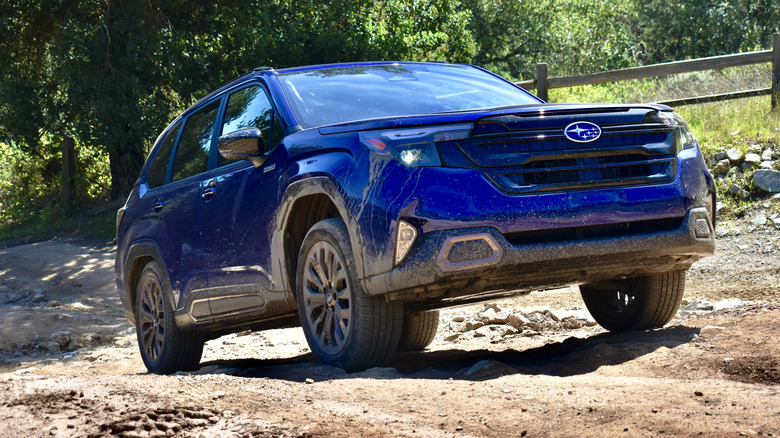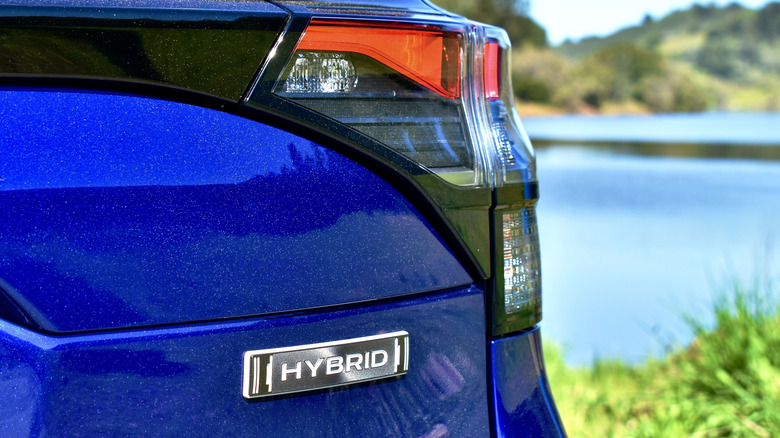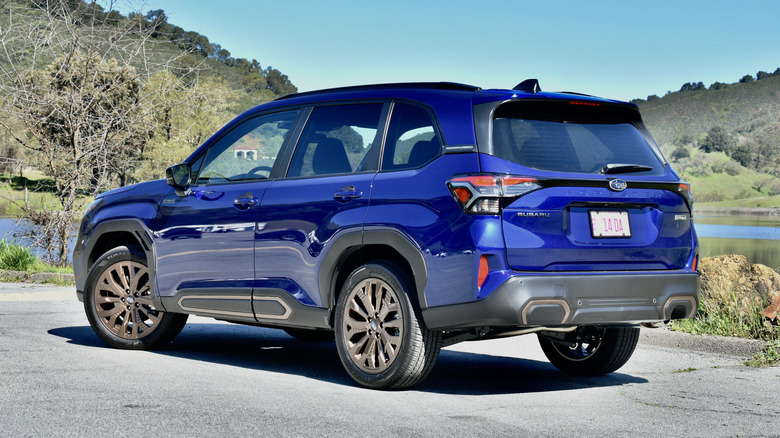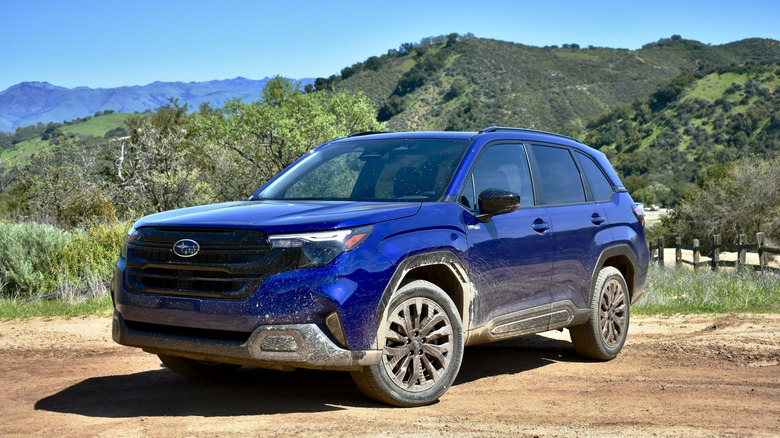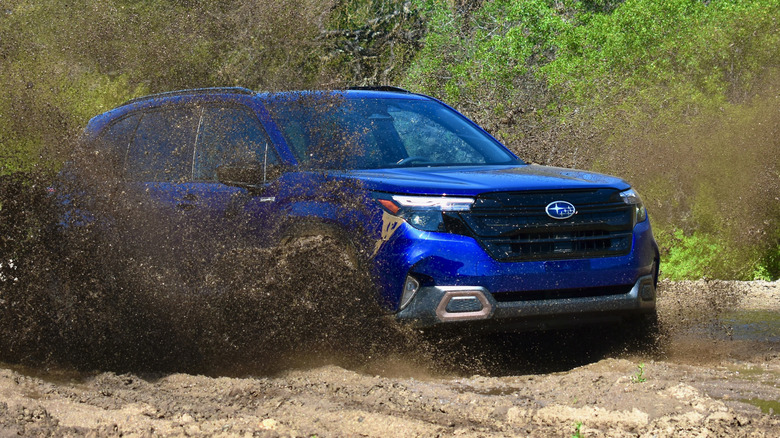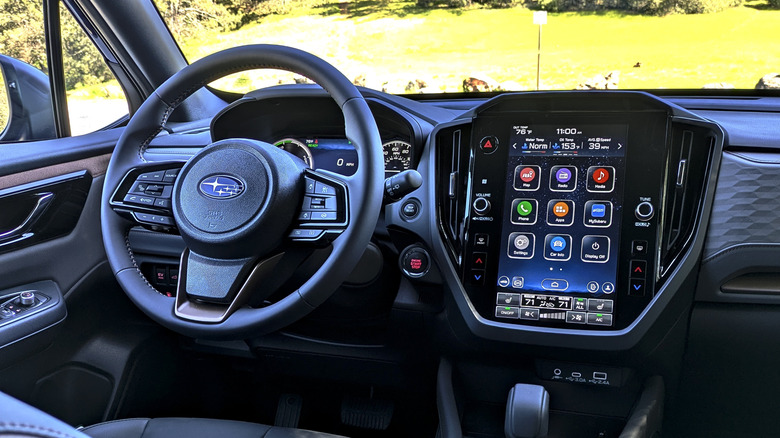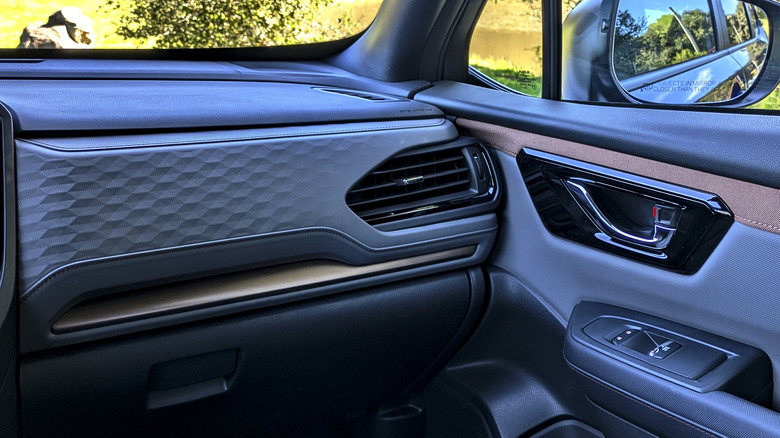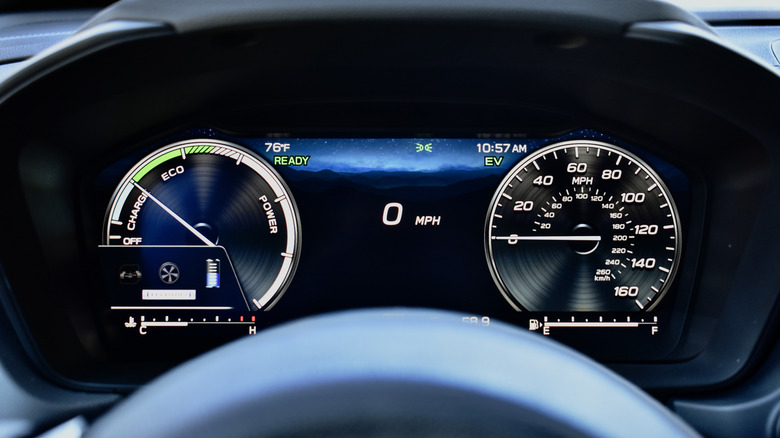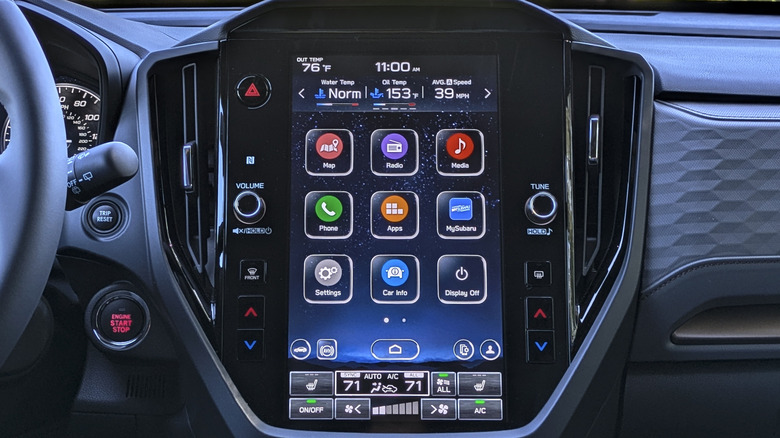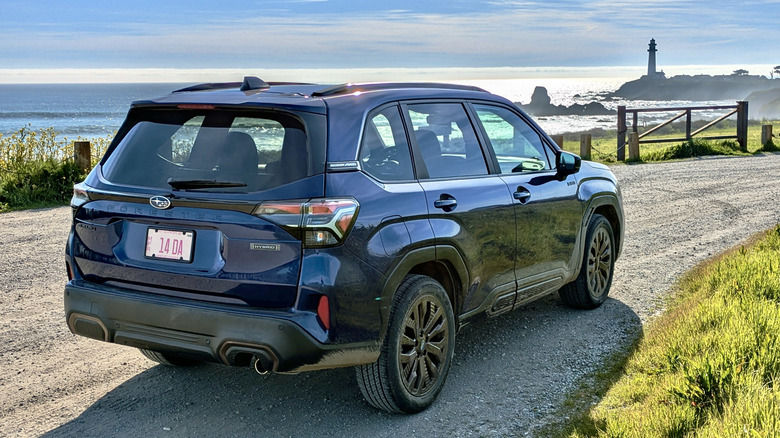2025 Subaru Forester Hybrid First Drive: Better Economy, Bigger Price
The 2025 Subaru Forester is competently executed update of a well-known nameplate, but Subaru saved the biggest change for last.
About a year after we first drove the 2025 Forester, which manages to be different yet the same as the previous generation, Subaru is rolling out a first-ever hybrid version. Scheduled to arrive at dealerships around the time you read this, the 2025 Subaru Forester Hybrid brings the expected boost in fuel economy, plus a bit of extra power, without sacrificing practicality or capability.
The Forester Hybrid checks an important box in the inevitable comparisons with rival crossovers like the Honda CR-V and Toyota RAV4, but much like the non-hybrid version, Subaru designed it first and foremost to address the needs and expectations of its existing customers. And some of those customers have likely been waiting quite some time for this hybrid.
A long and winding road to hybridization
Subaru built a loyal following in part because it specializes in less-wasteful alternatives to traditional SUVs. In the early 2000s, its all-wheel drive sedans, hatchbacks, and wagons were generally less efficient than equivalent models from other brands, but Subaru was, for example, able to pitch its Outback wagon as an alternative to the Ford Explorer and its ilk instead.
Gas-guzzling SUVs have long since been augmented by smaller, more fuel-efficient crossovers, a trend Subaru helped start with the original Forester. But the automaker has been slower to take the next step with a hybrid.
As a smaller automaker with less money for development, Subaru has had to be cautious in adopting new powertrain technology. It sold a mild-hybrid version of the Crosstrek hatch from 2014 to 2016 and then, to satisfy California's zero-emission vehicle mandate, it partnered with Toyota to use the latter's tech in the plug-in hybrid Crosstrek Hybrid. Sold from 2019 to 2023, the Crosstrek Hybrid was expensive and didn't offer much electric range, but it served its purpose as a compliance car.
A hybrid in more ways than one
The all-electric Subaru Solterra—also co-developed with Toyota and a twin of that automaker's bZ4X—means Subaru no longer needs a plug-in hybrid for regulatory compliance, while market trends finally convinced the automaker to have a go at a conventional hybrid. It's now easier to name the vehicles in the Forester's competitive set that don't offer hybrid powertrains, and Subaru expects hybrids' share of this segment to continue growing.
With that in mind, Subaru went back to Toyota to create a new powertrain that's not only a hybrid in its use of gasoline and electric power, but in its incorporation of Subaru and Toyota hardware.
Shared with the 2026 Subaru Crosstrek Hybrid, this powertrain combines a 2.5-liter boxer-four engine that's classic Subaru (but running on the Atkinson cycle) with a Toyota-style hybrid system that incorporates a pair of motor-generators. One of these units replaces the starter and can charge the battery pack (expected to be the same 1.1-kilowatt-hour unit as the new Crosstrek Hybrid) off engine power, while the second provides regenerative braking and propulsion via a planetary gearset. Producing 194 horsepower (14 hp more than the non-hybrid Forester), it's virtually the same setup as you get in a Prius.
Better fuel economy, but not the best
Subaru departs from Toyota, however, in its retention of a mechanical all-wheel drive system. Where the Toyota RAV4 Hybrid simply adds a third electric motor to power its rear wheels, the Forester Hybrid has essentially the same mechanicals as the non-hybrid model, with front, center, and rear differentials connected by prop shafts. The result is a notable improvement in fuel economy over the non-hybrid Forester, while still giving up a few mpg to other hybrid crossovers.
The Forester Hybrid is EPA-rated at 35 mpg combined (35 mpg city, 34 mpg highway)—improvements of 6 mpg combined, 9 mpg city, and 1 mpg highway over the standard Forester. But the Toyota RAV4 Hybrid is rated at 39 mpg combined (41 mpg city, 38 mpg highway) in most configurations, and still gets 37 mpg combined (38 mpg city, 35 mpg highway) in its rugged Woodland Edition guise.
It's a similar story with hybrid versions of the Honda CR-V and Kia Sportage, although the Forester Hybrid nearly matches the 35 mpg (across all categories) of most Hyundai Tucson Hybrid models (the Blue grade is rated at 38 mpg across the board). Subaru felt this tradeoff was worthwhile in order to maintain the benefits of its trademark hybrid system and, after driving the Forester Hybrid on pavement and dirt, it's hard to argue with that claim.
A better driving experience, too
The consistent grip of Subaru's all-wheel drive system remains the dynamic highlight of the Forester. We didn't experience any of the rain or snow that many customers likely have in mind when buying their Subarus, but winding our way up California's Santa Cruz Mountains, the Forester Hybrid clung to the pavement like plastic wrap. The all-wheel drive system had no trouble keeping pace, redistributing torque before there was even a hint of a problem from the driver's perspective.
Overall, though, the Forester is far less engaging than many rivals. It was comfortable on the highways and coastal Route 1, but when we turned inland and hit roads with a few corners, the flipside was substantial body roll. And, while the non-hybrid Forester's steering was a big improvement over the previous generations, the hybrid's seemed to regress into slowness and imprecision.
The Forester Hybrid also doesn't feel quick compared to its competition, but the powertrain's responsiveness is a big improvement over the non-hybrid version. The extra power definitely helps, but the availability of instant electric-motor torque and the deletion of the continuously variable transmission (CVT) really made acceleration feel more urgent and linear. Interestingly, though, the hybrid system still produces the same whine as a CVT.
More off-road capable than it needs to be
For the Forester Hybrid's media launch, Subaru was also keen to demonstrate that its mechanical all-wheel drive system pays dividends when it comes to off-road capability. We were indeed impressed, but the experience also showed why such capability isn't super relevant in a vehicle like this.
The off-road portion of the drive started with a scramble up a steep, deeply-rutted hill, stopping in the middle to show that the car could actually get going again in that tricky situation. But while it took several attempts to do this in the Forester, a Toyota RAV4 Hybrid brought in as a comparison did the job in one go, while a CR-V Hybrid only required two attempts. The driver's judgment and changing conditions are also factors here, and it was easiest to get a feel for what the Subaru's all-wheel drive system was doing, but it's clearly no cheat code.
Out on the trail, though, the all-wheel drive system and the Forester Hybrid's 8.7 inches of ground clearance (the same as the standard version) ensured there was no repeat of that situation. Keeping it slow and steady, the Forester easily made it up a steep gravel passage where a normal crossover owner would likely never take their vehicle. As our convoy stopped to admire a view, the driver of a lifted Jeep Wrangler doffed his cap.
Some additions could make it even better
Such a reaction from the driver of a purpose-built off-roader isn't surprising. While Subaru set up this demonstration, a representative noted that the automaker envisions customers using their Forester Hybrids to reach out-of-the-way camping sites or hiking trails rather recreational off-roading. And there are some good reasons for that.
Hybrid models come with all-season tires, which proved adequate on our dry and sunny driving day but will be traction-limited in other conditions. We'd also be worried about punctures, as the Forester Hybrid doesn't carry a spare (the battery pack lives where the spare normally would), not to mention underbody damage owing to the lack of skid plates. The Forester Wilderness, which moves to the current-generation Forester platform for the 2026 model year, addresses both of these points, but it won't be available with the hybrid powertrain.
Subaru's X-Mode, with terrain-specific drive modes and hill-descent control, is standard though. The latter was particularly useful as it's hard to use engine braking to maintain slow speeds when the engine is off a lot of the time. The hybrid does have regenerative braking, but it wasn't strong enough to be useful for this.
Styling and packaging haven't changed
The powertrain is really the only difference between the hybrid and non-hybrid Forester models. Discrete hybrid badges are the only addition to exterior styling that's fairly handsome, but leans too heavily on generic SUV cues like a large grille and boxy wheel arches. The available black roof doesn't really pop when paired with any of the available paint colors, but the Sport model's bronze accents do.
The hybrid's 27.5 cubic feet of cargo space with the rear seats in place and 69.1 cubic feet with the rear seats folded are identical to equivalent non-hybrid trim levels. Subaru does offer a base model for the non-hybrid Forester with a bit more cargo space, but that's not part of the hybrid lineup.
With the rear seats up—the way they'll likely be most of the time—the Forester has substantially less cargo space than hybrid versions of the Honda CR-V, Hyundai Tucson, and Toyota RAV4. The gap to the RAV4 is closer with the rear seats folded, but not the CR-V and Tucson. That still leaves a lot of space for stuff, though, and headroom and legroom are much more competitive, particularly in the first row.
Same usable tech as the non-hybrid Forester
Subaru's dashboard displays may not be as aesthetically pleasing as the curved display available in the Hyundai Tucson Hybrid, but they work well.
Because Subaru doesn't offer the hybrid powertrain on the base trim level, all hybrids come standard with the larger 11.6-inch portrait-oriented touchscreen, which incorporates wireless Apple CarPlay and Android Auto connectivity. The screen's oversized icons make it easy to use while driving, and Subaru thankfully retained analog temperature controls and a volume knob.
Also standard on hybrid models is a 12.3-inch digital instrument cluster that also presents information in a straightforward manner. A small tab on the left side of the display can switch to show things like the flow of power between the battery pack, engine, and wheels, as well as turn-by-turn directions from your smartphone. The latter feature only works with Apple CarPlay, however, not Android Auto.
Like other Subaru models, the Forester Hybrid comes standard with the expected array of driver aids—such as adaptive cruise control, forward collision warning, lane departure warning, and automatic emergency braking—but the automaker's EyeSight system employs stereo cameras mounted behind the windshield instead of the typical mix of cameras and radar mounted in more vulnerable positions in the front bumper or grille.
2025 Subaru Forester Hybrid Verdict
The cheapest 2025 Subaru Forester Hybrid is the Premium grade, which currently costs $36,415—$2,685 more than a non-hybrid Premium model. But Subaru also offers a non-hybrid base model that's $5,000 less than the Premium hybrid model.
A $39,415 Sport grade and $40,830 Limited grade are also available, costing $3,185 and $3,000 more than equivalent non-hybrid models, respectively. But if you opt for the $43,115 Touring, the price gap to the non-hybrid equivalent is just $1,400. All hybrid models include normally-optional equipment as standard, so the effective cost difference is even smaller.
All 2025 Forester models—hybrid and non-hybrid alike—are built in Japan, so they'll run afoul of new tariffs on imported cars. Subaru plans to shift production to its Indiana plant for the 2026 model year, using capacity left over from the discontinuation of the Legacy sedan and the movement of Outback production to Japan, but emphasized that this was in the works long before the Trump Administration's tariff tantrums began.
As things currently stand, the Forester Hybrid isn't the cheapest option, but it's comfortably within the same price range as other hybrid small crossovers. While it gives up a little to those rivals in fuel efficiency and power, it improves on the standard Forester in both areas. And delivering a better Forester for Subaru's loyal customers is what really matters.
